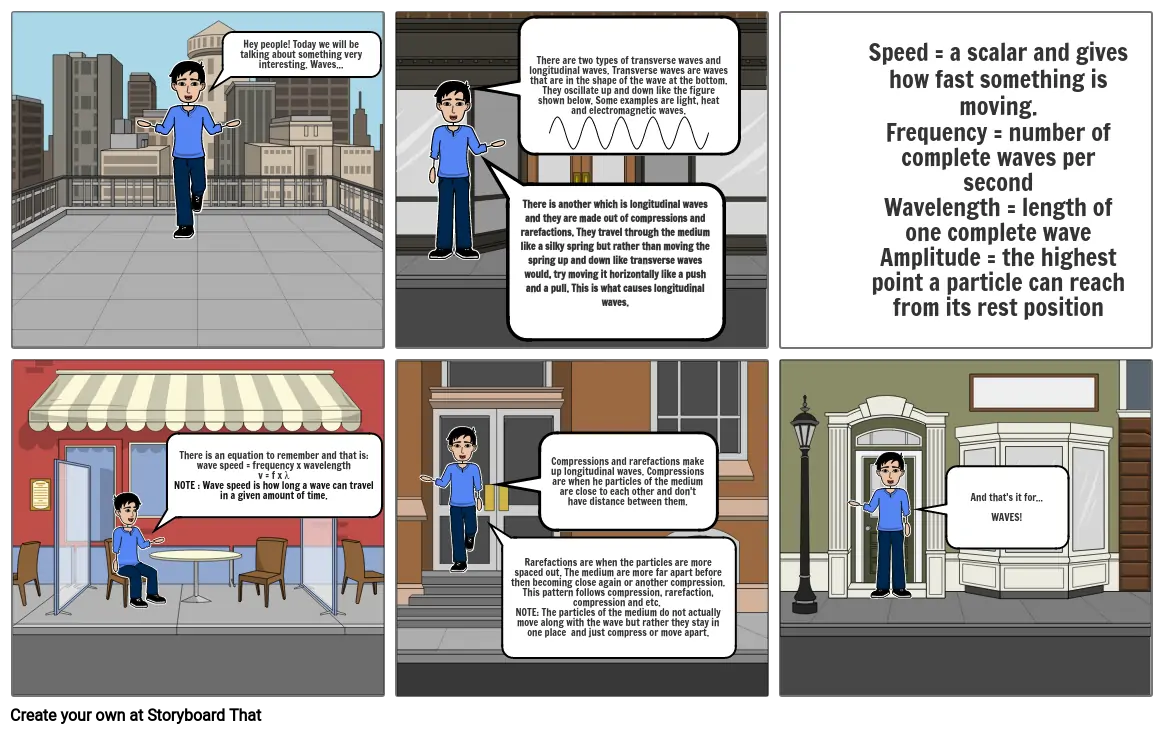Transverse vs Longitudinal

Texto del Guión Gráfico
- Hey people! Today we will be talking about something very interesting. Waves...
- There are two types of transverse waves and longitudinal waves. Transverse waves are waves that are in the shape of the wave at the bottom. They oscillate up and down like the figure shown below. Some examples are light, heat and electromagnetic waves.
- There is another which is longitudinal waves and they are made out of compressions and rarefactions. They travel through the medium like a silky spring but rather than moving the spring up and down like transverse waves would, try moving it horizontally like a push and a pull. This is what causes longitudinal waves.
- Speed = a scalar and gives how fast something is moving.Frequency = number of complete waves per secondWavelength = length of one complete waveAmplitude = the highest point a particle can reach from its rest position
- There is an equation to remember and that is:wave speed = frequency x wavelengthv = f x λNOTE : Wave speed is how long a wave can travel in a given amount of time.
- Rarefactions are when the particles are more spaced out. The medium are more far apart before then becoming close again or another compression. This pattern follows compression, rarefaction, compression and etc. NOTE: The particles of the medium do not actually move along with the wave but rather they stay in one place and just compress or move apart.
- Compressions and rarefactions make up longitudinal waves. Compressions are when he particles of the medium are close to each other and don't have distance between them.
- And that's it for...WAVES!
Más de 30 millones de guiones gráficos creados

